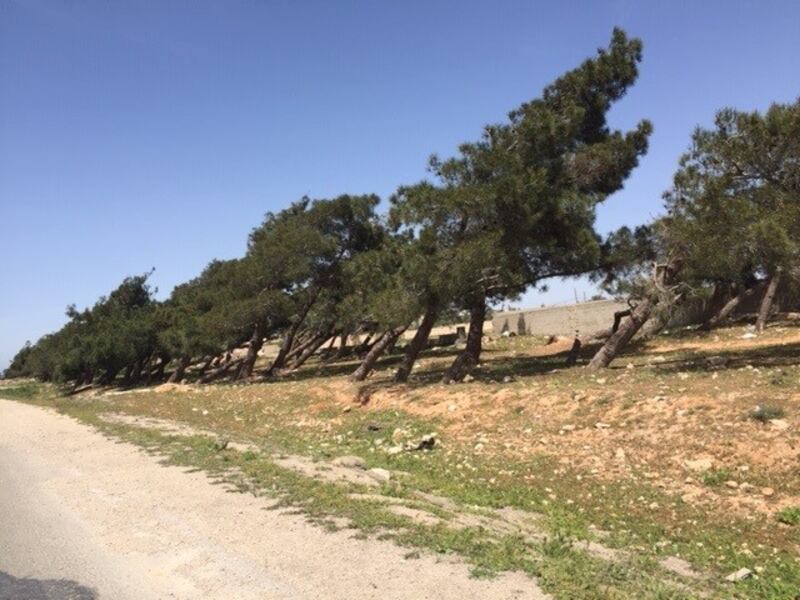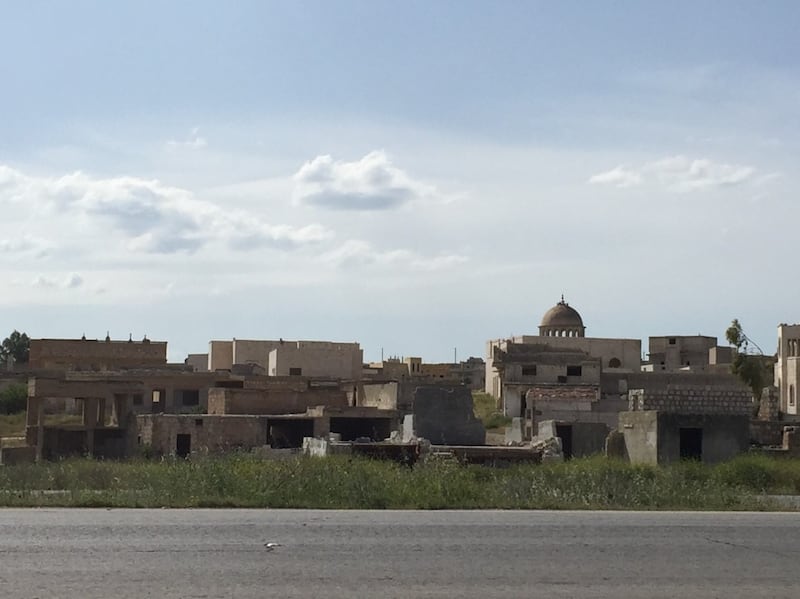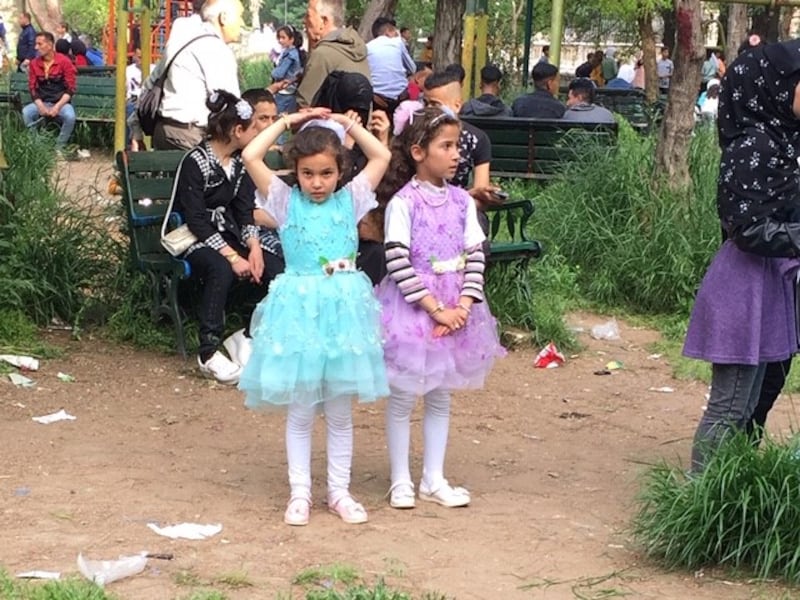The streets of the capital are empty. Damascenes have no petrol to gather for Eid al-Fitr, the feast ending the month-long Ramadan fast. Petrol is best saved for getting to work. Lorries, buses and a few private cars ply the broad highway to the north.
Joseph – a tour guide who worked with journalists during the war – has coaxed enough fuel from a station he frequents to get my German colleague Karin and me to Aleppo.
The road is 300km long – a journey of four to five hours.
Our first encounter with the evidence of war is at Harasta, which was on the front line in the 2017-18 battle against a collection of jihadi groups for the suburbs of Damascus.
READ MORE
Houses, apartment blocks and shops have been chewed up by artillery shells, bombs and mortars. Looted and abandoned car dealerships stand in a row beside the highway. The lower slopes of beige hills are covered with pale green grass stubble bestowed by late rain, the last of the season. The road’s verges are blessed with yellow daisies. A man with many jobs and responsibilities, Joseph grins and says, “I feel like a bird flying away from Damascus and its problems.”
Roadside signs warn speedsters of radar tracking and give police phone numbers if help is needed.
Houses on both sides sport solar panels for electricity and satellite dishes for television. We stop for midmorning breakfast at Abo Alezz, where we find fresh cheese, spices and thyme baked on to rounds of bread.
Speed bumps slow us ahead of an army checkpoint where car boots are opened at the border between Damascus and Homs provinces. On the roadside the wind has bent pines to lean eastward. Junipers and Cypress trees are erect.

Boys hawk grey-market petrol to desperate drivers. Stalls decorated with fairy lights sell cigarettes, bright-coloured sweet drinks, and biscuits. Families of four squeeze on to speeding motorbikes, women’s headscarves flapping. Sheep graze in green fields. Snow caps the peaks of the distant Anti-Lebanon range. We pass al-Waer, a Homs suburb held by armed groups until 2017, when Karin and I entered for interviews with survivors.
In Hama province, olive and almond trees fill the fields. A handsome housing estate has been abandoned by war and sanctions which have plunged a majority of Syrians into poverty.
Black Bedouin tents lounge beside crude breeze-block huts.
Vast fields of squat pistachio trees announce Idlib province where, in September 2019, I visited the ravaged and empty town of Khan Sheikhoun soon after the Syrian army routed al-Qaeda affiliate Jabhat Al-Nusra.
Following that battle the army gradually re-established government control over the direct Damascus-Aleppo highway. Before then, travellers had to take a sometimes dangerous detour.
Aside from a petrol pump where Joseph fills his tank, we find no people in the villages of southern Idlib. Homes, mosques with delicate minarets, shops and workplaces stand empty with staring windows. Joseph says farmers come from Hama and nearby villages to harvest pistachio and olive crops, which jihadis used to gather and sell to Lebanese traders, who exported the nuts and olives to Europe. This is a long, eerie stretch of Idlib, which is divided between government and jihadi control.

Unpopulated Idlib gives way abruptly to heavily populated Aleppo city in the province of the same name.
Handsome beige and brown apartment blocks rise on both sides of the road, traffic appears from nowhere, and people suddenly fill the streets. The contrast is strange and somewhat frightening.
We celebrate our arrival in Aleppo with hetaliya, pudding topped with thick cream and crushed pistachios, and a walk in the park. Here children swarm up the steps to platforms and slip down slides, beg their parents for ice cream cones, candyfloss and balloons. Warfare is forgotten on the second day of the festival.


















